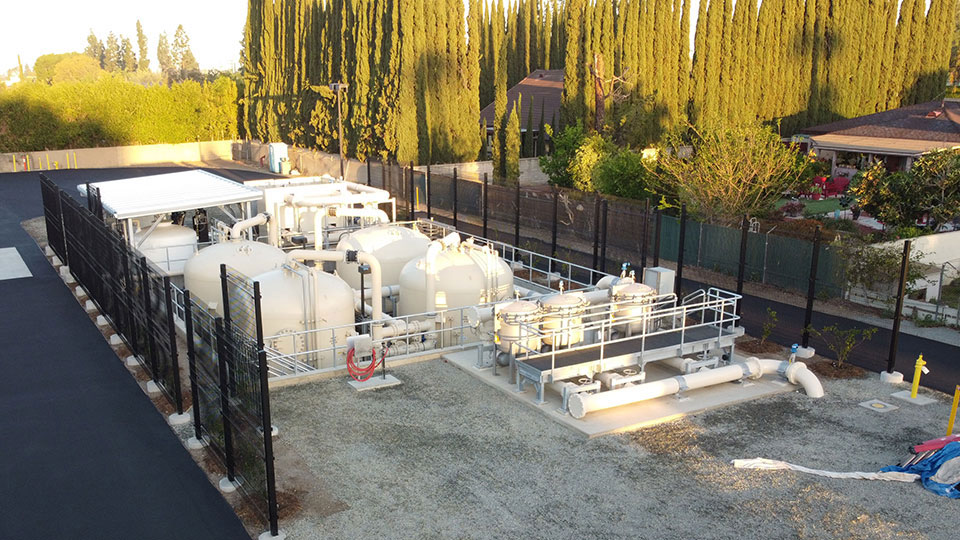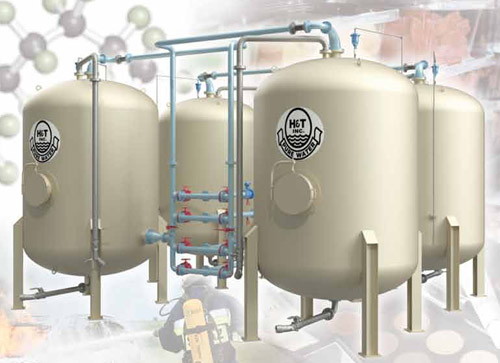Exactly How PFAS Therapy Guarantees Clean and Lasting Water
The visibility of PFAS, frequently called "forever chemicals," poses substantial obstacles to water top quality and public health. Advanced treatment technologies, including activated carbon adsorption and membrane layer filtration, have actually become efficient services to reduce these contaminants. By employing these approaches, neighborhoods can not just achieve cleaner water however additionally foster sustainable methods that secure ecosystems. The implications of these therapies extend beyond instant wellness advantages; they elevate crucial questions regarding lasting water management techniques that need to be addressed to make certain a resilient future. What does this mean for our strategy to water sustainability?

Recognizing PFAS Contamination
PFAS, or per- and polyfluoroalkyl substances, have actually emerged as a considerable environmental issue because of their extensive occurrence and perseverance in the atmosphere. These synthetic chemicals have been utilized in different industrial applications and consumer items, consisting of non-stick pots and pans, water resistant garments, and food packaging, because of their one-of-a-kind buildings such as water and grease resistance.
The contamination of dirt and water resources by PFAS takes place mainly through commercial discharges, firefighting foam usage, and seeping from landfills. pfas management. As soon as launched, these substances are resistant to destruction, bring about their build-up in the setting. This perseverance raises vital problems, as PFAS can travel long ranges via groundwater and surface area water systems, impacting drinking water products and communities

Health And Wellness Threats of PFAS
The determination of PFAS in the environment elevates substantial health and wellness worries for people revealed to these compounds. Research has actually linked PFAS exposure to various negative wellness effects, consisting of immune system disorder, liver damage, and boosted risk of certain cancers.
The ubiquity of PFAS in customer products, such as non-stick cooking equipment, water-repellent textiles, and food product packaging, more enhances the threat of direct exposure. Consuming alcohol water infected with PFAS is a substantial concern, as these chemicals can seep right into groundwater resources. Prone populaces, consisting of youngsters and those living near commercial websites, may face increased risks as a result of their creating systems and potential for higher exposure levels.
As awareness of these wellness dangers continues to expand, regulative agencies are starting to develop guidelines for PFAS degrees in alcohol consumption water. Public wellness campaigns are necessary to reduce exposure and safeguard neighborhoods from the long-lasting impacts of these dangerous materials.

Ingenious Treatment Technologies
Just how can we effectively tackle the difficulties postured by PFAS contamination in water sources? Ingenious therapy modern technologies are becoming important options in the quest for clean water. These methods focus on the removal or damage of per- and polyfluoroalkyl materials (PFAS), which are infamous for their determination in the atmosphere.
One encouraging strategy is adsorption utilizing innovative products, such as triggered carbon and ion exchange materials. These products have actually revealed efficacy in recording PFAS particles from water. One more noteworthy technology is membrane filtering, which uses nanofiltration and turn around osmosis to separate contaminants at the molecular degree, hence giving a barrier against PFAS.
In addition, progressed oxidation processes (AOPs) use solid oxidants to damage down PFAS substances right into harmless results. This approach is especially reliable for dealing with highly infected water resources. Bioremediation techniques, utilizing particular microbes, are additionally being discovered to weaken PFAS.
As research study continues, hybrid systems that combine several innovations may provide improved efficiency, resolving the complexities of PFAS contamination. The growth and application of these innovative therapy modern technologies are essential actions towards making sure the security and sustainability of our water resources.
Advantages of Reliable PFAS Treatment
Successfully dealing with PFAS contamination in water sources substantially enhances public wellness and environmental safety and security. PFAS, commonly referred to as pfas management "for life chemicals," are resistant to destruction and can collect in the human body, bring about severe wellness dangers such as cancer cells, liver damage, and immune system disorder. By executing reliable therapy approaches, areas can reduce exposure to these hazardous materials, eventually boosting the health end results of their populations.
Furthermore, successful PFAS treatment adds to the preservation of local ecosystems. Polluted water can adversely impact water life and interrupt the delicate balance of local habitats. By making certain clean water, treatment processes protect biodiversity and keep eco-friendly stability.
Additionally, reliable PFAS removal can foster public self-confidence in water top quality. When areas are ensured that their alcohol consumption water is free from damaging pollutants, it promotes a feeling of security and wellness. This trust fund is essential for area interaction and support for continuous water administration initiatives.
Future of Water Sustainability
Amid expanding issues about water top quality and shortage, the future of water sustainability depends upon cutting-edge methods and collaborative efforts. As neighborhoods face the looming hazards of impurities like PFAS, the advancement of sophisticated treatment technologies is necessary. These technologies not just focus on the removal of hazardous substances yet likewise promote the reuse and recycling of water, consequently reducing total need.
In addition, efficient water governance plays a vital duty in ensuring lasting practices. Policymakers need to incorporate scientific research study with regulative frameworks to develop clear standards for water use and therapy. Stakeholder interaction, including local communities and sectors, fosters a sense of common duty and encourages lasting techniques across different markets.
Financial investment in infrastructure is additionally critical; updating aging systems to integrate modern-day filtering and filtration approaches can significantly boost water quality. In addition, accepting green technologies, such as natural purification systems, can provide eco-friendly services.
Eventually, the future of water sustainability depends on an all natural technique that incorporates modern technology, policy, and area participation. By prioritizing these components, we can safeguard our water sources for generations to come, making certain clean and lasting water for all.
Final Thought
Finally, the reliable therapy of PFAS is vital for making sure tidy and lasting water. By employing innovative innovations such as activated carbon adsorption, membrane filtration, and advanced oxidation procedures, communities can dramatically reduce the wellness dangers related to these impurities. Additionally, the assimilation of these treatment approaches supports environment defense and improves biodiversity. Inevitably, durable PFAS treatment methods add to lasting strength in water management, promoting public depend on in water quality and advertising sustainable practices.